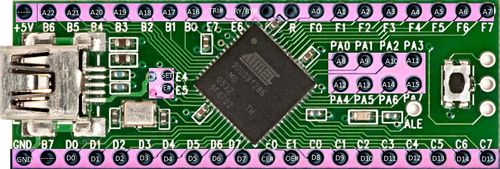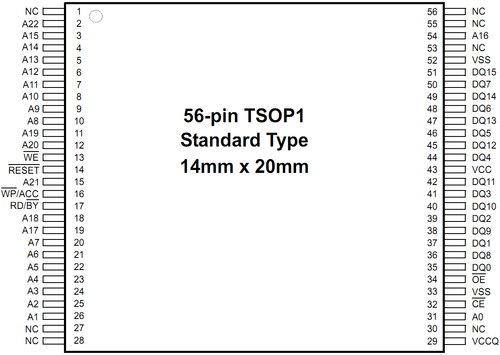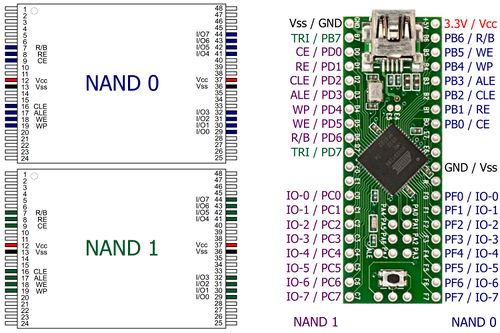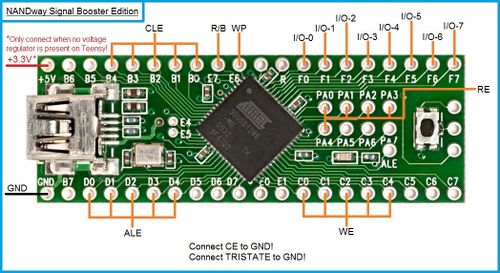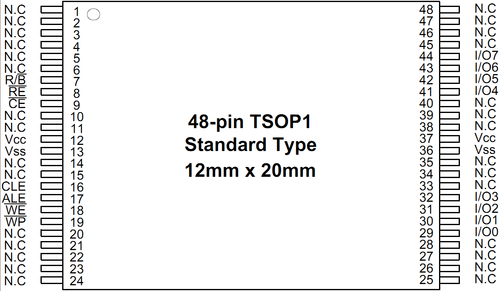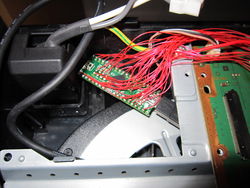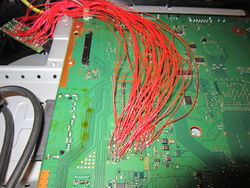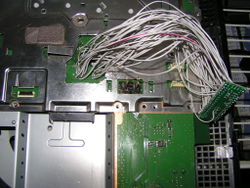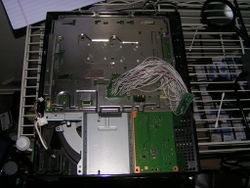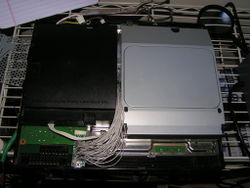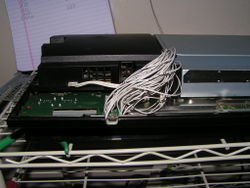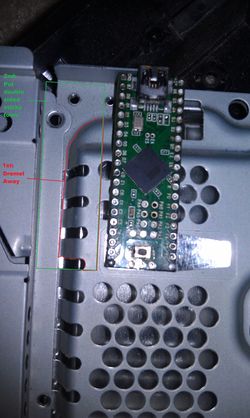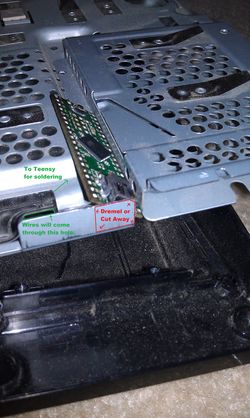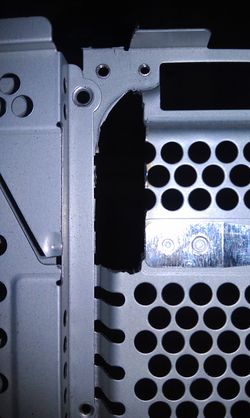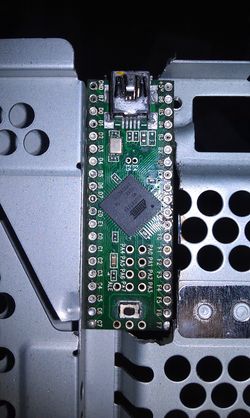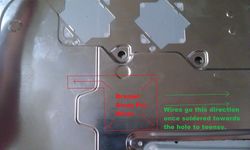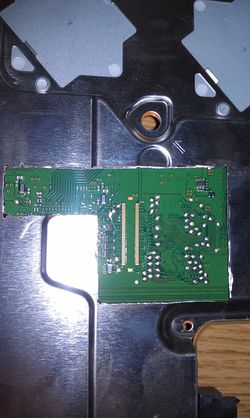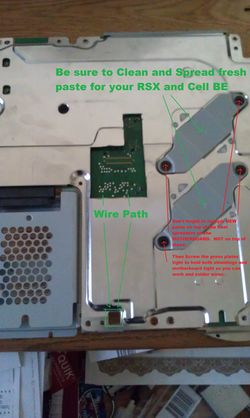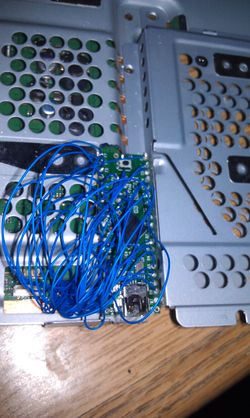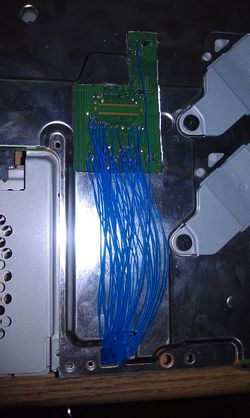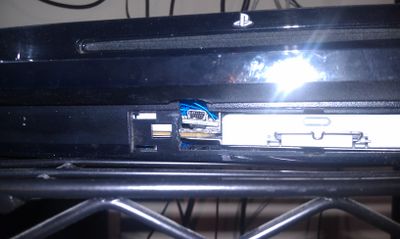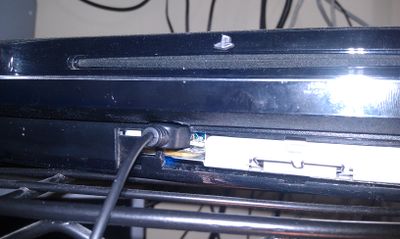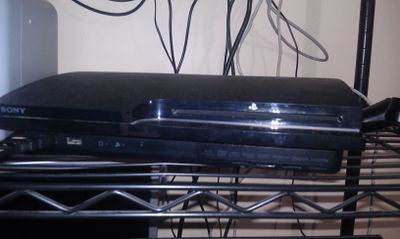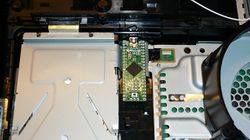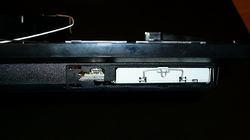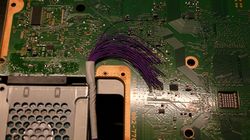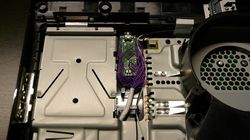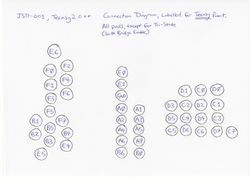Teensy++ 2.0: Difference between revisions
m (→Teensy loader) |
m (→Teensy loader) |
||
| Line 18: | Line 18: | ||
== Teensy loader == | == Teensy loader == | ||
Program used to load the compiled hex-file for the Teensy++ 2.0 (AT90USB1286), as explained here: http://www.pjrc.com/teensy/loader.html | Program used to load the compiled hex-file for the Teensy++ 2.0 ([http://www.atmel.com/devices/AT90USB1286.aspx AT90USB1286]), as explained here: http://www.pjrc.com/teensy/loader.html | ||
*Windows: [https://www.pjrc.com/teensy/teensy.exe teensy.exe] | *Windows: [https://www.pjrc.com/teensy/teensy.exe teensy.exe] | ||
*Ubuntu linux x32: [https://www.pjrc.com/teensy/teensy.gz teensy.gz] | *Ubuntu linux x32: [https://www.pjrc.com/teensy/teensy.gz teensy.gz] | ||
Revision as of 15:29, 30 July 2015
Description
The Teensy is a complete USB-based microcontroller development system, in a very small footprint, capable of implementing many types of projects. All programming is done via the USB port. No special programmer is needed
To use it as a PS3 flasher is needed to program it with either NORway.hex or NANDway.hex, explained below
Teensy++ 2.0 dimensions: 2.0 x 0.7 inch = 5.0 x 1.7 centimeter (1 decimal rounded)
Teensy Software
Windows Drivers and Linux UDEV Rules
The Teensy 2.0++ needs windows drivers and linux udev rules to be recognized fully as it was meant to, as explained here http://www.pjrc.com/teensy/usb_serial.html
- Windows driver: serial_install.exe
- Linux UDEV rules: 49-teensy.rules
- FreeBSD device conf: freebsd-teensy.conf
Teensy loader
Program used to load the compiled hex-file for the Teensy++ 2.0 (AT90USB1286), as explained here: http://www.pjrc.com/teensy/loader.html
- Windows: teensy.exe
- Ubuntu linux x32: teensy.gz
- Ubuntu linux x64: teensy.64bit.gz
- Mac OS-X: teensy.dmg
- Raspberry Pi (experimental): teensy_raspberrypi.tar.gz
- Command line source code on github: https://github.com/PaulStoffregen/teensy_loader_cli
Programming teensy with NORway or NANDway
The program needed to be loaded to the teensy to use it as a PS3 flasher (choose one based on your flash type or installation wiring):
- NORway.hex (for NOR flash PS3 models)
- NANDway_DualNANDEdition.hex (for NAND flash PS3 models with both NANDS connected to teensy)
- NANDway_SignalBoosterEdition.hex (for NAND flash PS3 models with a single NAND connected to teensy)
Python and Pyserial (only windows)
- Python 2.7.2 : python-2.7.2.msi
- Pyserial 2.5 : pyserial-2.5.win32.exe
NORway
NOR PC Python client NORway.py
Used to analyze dumps and also contains hex files to program the Teensy itself.
Mac OS-X patch
if you are on Mac OS-X and having problems with timeouts:
<MikeM64> hahaha, it's a dirty fix, but it seems to work XD <MikeM64> lemme compile diffs, I got perfect writes happening on my mac now <MikeM64> 10 writes and 2 timeouts; not bad. better than 20 timeouts / write <MikeM64> http://pastie.org/8570558 if anyone needs it
NORway usage
Usage: %s serialport [command] [filename] [address]
serialport Name of serial port to open (eg. COM1, COM2, /dev/ttyACM0, etc)
command dump Reads entire NOR to [filename]
erase Erases one sector (128KB) at [address]
write Flashes (read-erase-modify-write-verify) [filename]
at [address] to NOR
writeimg Same as write, but prepend a 16-byte length header
[address] is required
program Flashes (erase-write-verify) [filename]
at [address] to NOR
release Releases NOR interface, so the PS3 can boot
filename Filename for [dump|write|writeimg|program]
address Address for [erase|write|writeimg|program]
Default is 0x0, address must be aligned (multiple of 0x20000)
NANDway
NAND PC Python client NANDway.py
Project home:
- https://github.com/hjudges/NORway (previously https://github.com/Effleurage/NORway-and-NANDway but now merged in main git)
precompiled by judges : http://www.mediafire.com/?i5y1mhhh5lz62xu
NANDway usage
NANDWay.py Serial-Port 0/1 Command
Serial-Port Name of serial port to open (eg. COM1, COM2, /dev/ttyACM0, etc)
0/1 NAND id number: 0-NAND0, 1-NAND1
Commands:
* dump Filename [Offset] [Length]
dumps to Filename at [Offset] and [Length]
* vwrite/write Filename [Offset] [Length]
Flashes (v=verify) Filename at [Offset] and [Length]
* vdiffwrite/diffwrite Filename Diff-file
Flashes (v=verify) Filename using a Diff-file
* release
Releases TRISTATE, so that the PS3 can boot
* bootloader
Enters Teensy's bootloader mode (for Teensy reprogramming)
Notes: 1) All offsets and lengths are in hex
2) The Diff-file is a file which lists all the changed
offsets of a dump file. This should increase flashing
time dramatically.
Examples:
NANDWay.py COM1
NANDWay.py COM1 0 dump d:\myflash.bin
NANDWay.py COM1 1 dump d:\myflash.bin 3D a0
NANDWay.py COM1 0 write d:\myflash.bin
NANDWay.py COM3 1 write d:\myflash.bin
NANDWay.py COM3 1 vwrite d:\myflash.bin 8D A0000
NANDWay.py COM4 0 diffwrite d:\myflash.bin d:\myflash_diff
NANDWay.py COM3 1 vdiffwrite d:\myflash.bin d:\myflash_diff
NANDWay.py COM1 0 release
Notes:
- WP: When the NANDs are mounted on the PS3 motherboard - the WP controllines are already connected to +3.3V. If Teensy is used for NANDs on the PS3 motherboard - the WP wire for each NAND can be discarded.
- Vcc: Teensy 3.3V regulator cannot power the NANDs on the PS3. The drain of the motherboard summed by the other peripherals draw too much current (~1.8A). The NANDs can be powered from external 3.3V power supply like ATX power supply (the orange 3.3V line of the ATX main connector).
WAY-launchers
Simple GUI to run NORway, NANDway and SPIway.
Project home:
Forum threads:
- http://www.psx-place.com/ps3-news/1793/waylaunchers-now-with-linux-amp-mac-support-by-littlebalup.html
- http://www.psx-place.com/ps3-news/329/waylaunchers-v202-a-gui-to-run-norway-nandway-amp-spiway-scripts.html
- http://www.psx-place.com/forum/downgrading/launchers-325.html
Installation Requirements
You are going to need a lot parts to accomplish such a task. This takes a lot of patience, and steady hands.
This is a difficult installation! If a part is not needed below it will be specified per model so check there as well.
Parts
The following is a list of good tools you could use to perform the installation of the Teensy++
- PS3 disassembling tools:
- 1x Regular Philips head screwdriver
- 1x Torx T-10 or T-8 screwdriver (depending on PS3 model)
- Case modification tools:
- 1x Cutting knife (to make straight cuts in the plastic)
- 1x Drill and small drill bits set
- 1x Needle file set (also known as diamond files for jewellry or hobbyists) with shapes as rounded, squared, triangular, etc. (to make holes in the plastic case or metals with different shapes)
- 1x Dremel tool or similar (to make long straight cuts, not needed on some models)
- 1x Roll of double sided foam tape, or double side thermal resistant tape up to 300°C (known as polyimide or kapton tape)
- Soldering work tools:
- 1x Soldering iron (15-30 Watt, or around 230°C) with a 1 millimetre tip
- 1x Tin solder (60/40 or a low melting point 63/37 alloy) with a high percentage of flux core like 2%)
- 1x 30AWG or 26 AWG silver-plated solid core and thermal resistant insulated wrapping wire, also known as kynar wire. (Few have reported 30AWG may be too small and has interference but does work if done well.)
- 1x Cutting knife (to peel wire tips by cutting around them), or a wire stripper tool
- 1x Multimeter (to identify shorts, to identify bad cold solder joints, to find where copper traces in the motherboard are connected, etc.)
- 1x Desoldering braid (aka desoldering wick or solder wick) preferred more than 2 millimetre wide (to fix the mistakes by melting the tin and wicking it, to remove the factory lead-free solder, to clean solders joints where a bad tin alloy happened because residues or degradation of the tin, to remove bridges between pins or pads, etc.)
- 1x Single side thermal resistant tape up to 300°C, known as polyimide or kapton tape (to stick wires in place, and to isolate wires or PCB boards from interferences by covering them, and other uses)
- 1x Fiberglass Scratch Brush or alternatively sandpaper and a needle (to expose copper pads by removing the green varnish masking layer that covers both sides of the motherboard, needed for some alternative points in NAND motherboards installations)
- 1x Bottle of flux, lead-free, no-clean
- 1x Bottle of 99% Isopropyl alcohol, aka Isopropanol (to clean residues from rosin core of tin, or flux)
- 1x Box of cotton swabs / Q-tips (to spread flux, or clean with alcohol where needed.)
- Other helpers:
- 1x Good lighting (either very well lighted room or a lamp. You need to be able to check your work.)
- 1x Magnifying glass, or jewellry magnifier, preferred 50x zoom (to check your soldering joints for bad cold solders.)
- 1x Small tweezers with a wide tip (to grab wires very close to the tip while soldering them and not burning your fingers in the process, only needed when the solder joint requires extreme precision)
- 1x Pair of steady hands (not joking. tremor fingers will not cut it. You are soldering 40+ points and all must be done very well.)
- 20x of patience, if you are having lot of problems is a good idea to stop and continue another day
As you can see it requires a lot of materials to perform this kind of job. If you do not already have the parts for this kind of project, it will probably be cheaper to pay someone else to do it and ship it to and from them. Also if you are not confident in your soldering technique, it is a very realistic possibility that you will damage your PlayStation 3 Console during this process as there are a LOT of soldering joints that need to be perfectly made.
Teensy 2.0 ++ Powering options
Teensy can work in a wide range of voltages up to 5v, but the same voltages that feeds the teensy are used in the data lines (traveling along the wires connected to PS3 flash)
All PS3 flash models included NAND and NOR works at a range of around 3.3 volts
For this reason is mandatory to cut the 5v trace at the bottom of the teensy board and short the 3.3v pads to feed the teensy with 3.3v, this way teensy and the PS3 flash chips will work at the same 3.3 voltage levels
Teensy powered by USB with the onboard voltage regulator
After cutting the 5v bridge and soldering the 3.3v bridge, we solder the voltage regulator on the Teensy
This is the standard way of powering the teensy with 3.3v, by soldering a 3.3v regulator as explained in https://www.pjrc.com/teensy/3volt.html
DON'T CONNECT THE +5V SOLDER PAD IN A CORNER OF THE TEENSY TO ANYTHING !
Teensy powered externally by PS3 or adaptor
Same as before, first is needed to cut the 5v bridge and solder the 3.3v bridge, but here is not used a voltage regulator
To feed the teensy with the 3.3v are several options, as using an external power supply, taking a 3.3v line from the power supply or from some point of the motherboard... info about this methods can be moved here
In all cases, there is a wire connected from the 3.3 voltage power source to the +5V pad in a corner of the teensy. Note using a on/off switch in this wire is suggested otherway teensy will be powered up permanentlly
DON'T INSTALL VOLTAGE REGULATOR!
Question (by tiago95) Just one thing, those anyone know if the teensy sets automatically Tristate to ground on version v0.64 without any usb plugged in? Answer (by judges) No, NORway grounds tristate when you plug it into usb. But depending on how you power Teensy you might observe some unwanted behaviour that can lead to interference with the console when Teensy is wired up: 1) Teensy is powered externally (by console, no vreg) When usb is connected, console won't boot, because tristate gets grounded (by design) When usb is disconnected, console will boot. Everythings peachy 2) Teensy is powered by usb (vreg installed) When usb is connected, console won't boot, because tristate gets grounded (by design) When usb is disconnected, Teensy isn't powered by usb anymore, but might receive some voltage through signal lines, which can lead to unpredictable behaviourbecause Teensy is running in an undefined state
Teensy 2.0 ++ Pinout by flash type
See Hardware flashing page
| Flash Type / Model | PS3 Fat | PS3 Slim | PS3 SuperSlim | notes | |||||||||||||||||
|---|---|---|---|---|---|---|---|---|---|---|---|---|---|---|---|---|---|---|---|---|---|
| CECHA CECHB |
CECHC CECHE |
CECHE | CECHG | CECHH | CECHJ CECHK |
CECHL CECHM CECHP CECHQ |
CECH-20xx | CECH-21xx | CECH-25xx | CECH-25xx | CECH-30xx | CECH-40xx | CECH-40xx | CECH-40xx '12GB' noHDD | |||||||
| COK 001 |
COK 002 |
COK 002W |
SEM 001 |
DIA 001 |
DIA 002 |
VER 001 |
DYN 001 |
SUR 001 |
JTP 001 |
JSD 001 |
KTE 001 |
MSX 001 |
MPX 001 |
MPX 001 | |||||||
| NAND | 2x Samsung K9F1G08U0A-PIB0 | Yes | Yes | Yes | - | No | No | No | No | No | No | No | No | No | No | No | |||||
| 2x Samsung K9F1G08U0B-PIB0 | - | - | - | Yes | No | No | No | No | No | No | No | No | No | No | No | ||||||
| NOR | 1x Spansion S29GL128N90TFIR2 | No | No | No | No | Yes | Yes | Yes | Yes | - | - | - | - | - | - | No | |||||
| 1x Samsung K8Q2815UQB-PI4B | No | No | No | No | - | - | Yes | Yes | Yes | - | - | - | - | - | No | ||||||
| 1x Spansion S29GL128P90TFIR2 | No | No | No | No | - | - | Yes | Yes | Yes | Yes | Yes | Yes | Yes | Yes | No | ||||||
| 1x Macronix MX29GL128ELT2I-90G | No | No | No | No | - | - | - | Yes | Yes | Yes | yes ? | Yes | No | ||||||||
| 1x Samsung K8P2716UZC-QI4D | No | No | No | No | Yes | - | - | - | - | Yes | Yes | Yes | No | ||||||||
| 1x Macronix MX29GL128FLT2I-90G | No | No | No | No | - | - | - | - | - | - | - | - | Yes | Yes | No | ||||||
| eMMC | 1x Panasonic MN66840 + 1x Samsung KLMAG2GE4A-A001 |
No | No | No | No | No | No | No | No | No | No | No | No | No | No | Yes | |||||
| connection type | NAND layout 1 | NOR layout 1 | NOR layout 2 | NOR layout 3 | NOR layout 4 | NOR layout 5 | eMMC layout | ||||||||||||||
Teensy NOR pinout
Teensy NAND Pinout
File:TeensyNAND.png Teensy DUAL NAND pinout |
Teensy Solder Install Notes by Motherboard Model
First open the PS3. Follow youtube videos to learn how (Just search).
Once opened, look at the motherboard model printed there. Depending on which model you have follow the case modifications below to install teensy.
There are two methods to use a Teensy 2.0++ Flasher.
1.) Install while the PS3 is somewhat opened still with everything plugged in. (Be careful of shorts.)
2.) Internal Case Modifications. This is the best way to go as you can install the teensy inside of the PS3 for later use. This is the advantage of using a Teensy 2.0++ because it's just small enough to install inside the PS3 with a little case modification. Other flashers are generally too large to do this with the PS3 closed up. You will find there is just no room for it.
COK-001, COK-002, COK-002W, SEM-001
I used the image for the Progskeet, along with an image of which Progskeet pin(GP1 etc.) corresponds to which NAND chip pin name (WP, ALE, CLE, I/O1 etc.) to create a diagram of which testpoint on the mainboard goes to which leg of the NAND chips made by Samsung.
Diagram for wiring Teensy++ 2.0 to a PS3 COK-002 mainboard
So now you can use this diagram not only for downgrading/dumping/writing the NANDs with a Teensy++ 2.0 board, but with any other board available on the Internet.
Important: You must provide a stable 3.3V PSU to both the PS3 board and the Teensy, and don’t forget to unite the GNDs. You can use any PSU which outputs 3.3V @ 1.8A+, the easiest option will be to use a PC PSU.
DIA-001, DIA-002
Parts not needed? Submitter please list here.
Installation and Case Modification
This installation the case was not modified. It was flashed while opened, and removed.
VER-001
Usage :
1 - Connect first SB VCC 2v Max
2 - Connect in second step Vcc Teensy2++ 3.3v
Installation and case modification
In this installation, the cables were strategically soldered to fit better and not break or short when the power supply was placed, so no external power was needed.
DYN-001
Parts not needed - Torque T-10 Screwdriver. (T-8 IS still needed!)
Installation and Case Modifications
Be sure to make a screw map when disassembling the PS3, there are a lot of screws, and you will not remember where they go.
First and Second dremel area. These 4 pictures show before and after affects and where to dremel on the top side shielding.
Third dremel area. These pictures show before and after affects and where to dremel on the bottom side shielding.
This helps with interference by running wires outside the shielding instead of inside. This method has to be done
on these models as unlike JSD-001 Models there are no holes or spaces between the HDD and shielding. It's connected
on DYN-001 Models.
NOTE: When placing teensy, DO NOT PLACE directly on the shielding. Make sure you use a strip of double sided foam tape. to act between the shielding and teensy.
Forth and last dremel area. This is done on the case itself. The port for the teensy is covered by the HDD cover area. You will have to take care in cutting open the area. If you did not spread your wires out evenly on the underside of the shielding, it will create a raised section and the port itself will be too high to reach and may have to dremel higher.
Notes on Reassembly: Before putting back the blu-ray drive, carefully bend each wire on the topside flat by hand ONE AT A TIME so you do not break the solder joints on the teensy. If you do not bend them flat by hand one at a time carefully, the drive could easily undo one of your soldering joints and you will have to start again. (I managed to do it on the first try. Did I say that you needed 1x of Patience?
Testing: You can test your work before putting the cover top back on. Just make sure blu-ray and power-supply are connected and everything else before trying. This is so you know that everything is fitting okay and that the install has worked for you. Take 3 dumps (Read above on how to take a dump of NOR) and compare them. Do md5sum and sha1sum, and then try and unpack them with norunpack from f0f tools. If they all match, and it unpackages, congratulations you have a good dump!
JSD-001
No dremel required. Design of this CECH 2500 series has an opened hole area to put wires through.
Installation and Case Modification
File:JSD-001 testpoints.png JSD-001 Motherboard NOR Test Points. |
SUR-001/JTP-001/KTE-001
- Need submissions...
Teensy Flash Clip adapters
Teensy clip adapter Board for NANDway v1
Layout for a PCB without external Voltage-source (this was the first version without capacitors, Voltageregulator and two bridges)
deprecated, use v2 instead
Gallery
Download
Teensy2Clip - Folie.pdf mirror
Teensy clip adapter Board for NANDway v2.1

Source article: http://playstationhax.it/forums/topic/1149-teensy-adapter-board-for-nandway/
Hey. in the past, i create a simple adapter board to connect the Teensy to a "360-clip NAND Clip" (the classic kind of NAND Clips). It's easier and faster to solder a board than wire the cables, no more problems with cable breaks and a good connection. An english speaking user ask me for a solder tutorial, so I thought on this occasion, i can write directly to the community. :) Of course, you can find all what you need below to order your own boards.
I hope i could help someone
with kind regards
esprit1711 from psXtools Team :)
But now the tutorial with some words (the most things should be self-explanatory).
What you need
- 1x adapter board
- 1x Teensy++ 2.0
- 1x 5V to 3,3V Voltage Regulator for the Teensy (MCP1825, LM3940 or Pin-compatible)
- 1x TSSOP 32 NAND-Clip (360-Clip) with equipment (Flat-cable, Pin-header (2x11) and the red adapter board (you get always all these things when you buy a new NAND Clip))
- 2x Pin-header (1x20)
- 1x Pin-header (2x4)
optional but recommendable
- 2x female connector (1x20)
- 1x female connector (2x4)
- 1x Pin-header (1x3)
- 1x Jumper
- 1x Capacitor 100nF SMD-0603
- 1x Capacitor 10µF SMD-0805
Optional (if you want power the NAND with external Power)
- 1x 5V to 3,3V Voltage Regulator (LMS1587CS-3.3 or Pin-compatible)
- 1x 5V Powersupply (minimum 3A)
See section above to cut the 5v trace on teensy and how to solder the 3.3v regulator at the bottom of teensy board
Solder the adapter board
Solder pinheaders on adapterboard
Solder the pin-header on the board (be careful, the plastic of the pin-header could melt fast)
now, plug the red adapter board (which was at the NAND-clip) on the pin-header, solder the pins and cut them if they are too long.
Solder adapterboard on pinheader
Mount Teensy to board
You can choose, if you want solder the Teensy fixed on the board....
... or solder the Teensy on female connector to unplug him any time
Powersource 1x3 pinheader
with the following 1x3 pin-header, you can choose the Powersource for the NAND (external, or USB) (sometimes it can cause problems, when you use the USB as Power Supply)
when you Power the NAND by USB, the final step is to connect the common header-pin with outermost pin
Optional things:
Filtering
for a cleaner voltage, you should solder the capacitors
External regulator
you can also solder a stronger voltage-regulator (than the one on the Teensy) to connect a stronger 5V power supply (than your USB Port).
Before you solder the regulator on the board, you should prepare the large pad of the Regulator and the Board with a layer of tin.
DC connector
you can connect your 5V Power supply on the marked solder points. I used a DC-coupling for a better handling
when you want use the external voltage, you must reposition the jumper (like you can see on the picture), but you can always change the powersource with the jumper
Where you can buy this boards?
You can find a zip-file to download below. in this file, you find the complete project folder. You can use the files to view and change the Layout or the circuit diagram, but if you only want a board, you can send this zip-file to a PCB service. I order my boards always at elecrow.com. The board has a size of 55mm x 45mm, so you must order the boards on this page.
Before you add your order to the cart, the options should (except the colour, this is your choice) look like on the following picture (a change of the order quantity only changed the weight and the transportation costs, so i order always 10 boards)
Download
Teensy Adapter Platine V2.zip / mirror
EDIT 2015-06-10 V2.1 available / 2.1 mirror. Fixed a layout mistake (twisted the 2x4 pin header at the Teensy socket (thank to Th3Knights for the report) and change the silkscreen. If you have a V2, you can use it without any problem. the V2 use only 2 of 5 lines for RE, but this is not a critical problem.
You can open the project file with Target3001 (the simplest variant of this tool is free), but below, you find a pdf of the schematic, too
Teensy Adapter Platine V2.pdf mirror
TEENSY2PS3
http://www.psx-place.com/forum/downgrading/teensy2ps3-pcb-linker-teensy-2-0-ps3-1728.html
http://www.mediafire.com/download/i9tma7gkft84442/TEENSY2PS3_v1.00.zip
| ||||||||||||||||||||||||||||||||||||||







